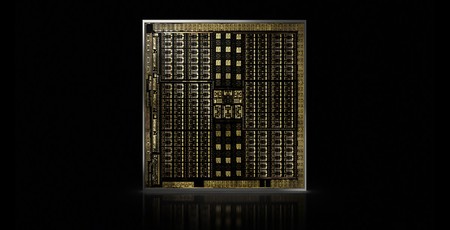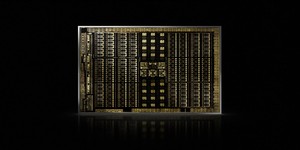
Nvidia has officially unveiled the first consumer-grade Turing-architecture cards to use its new ray tracing and Tensor deep-learning accelerator cores, first unveiled in the pro-grade Quadro RTX family, and it comes with a surprise: Broad support from the gaming industry for ray tracing in games.
First seen earlier this month in the Quadro RTX and unveiled at the well-heeled consumer level late yesterday in the GeForce RTX family, Nvidia's Turing architecture is a departure for the company: Rather than, as in past releases, concentrating on expanding the number of general-purpose CUDA processing cores, the company has added new application-specific acceleration hardware for deep-learning and ray tracing. The latter has been a target of the games industry for decades, offering considerably more realistic visuals than today's rendering methods by literally tracking individual rays of light as they bounce off objects in the scene, but has until recently been too computationally intensive for real-time use without high-priced pro-level acceleration hardware.
Having hardware to support ray tracing acceleration is one thing, of course, but it's useless without software support. This, as with any new technology, typically leads to a chicken-and-egg scenario: Nobody buys the hardware because no software yet supports it, and no developers add support because nobody's buying the hardware. It's a conundrum that has put paid to many promising technologies in the past, but Nvidia - though a partnership programme which sees it funding development itself - has headed the problem off at the pass and promises wide-spread support when the cards launch next month.
Nvidia has confirmed eleven games which will include real-time ray tracing support, via Microsoft's DirectX 12 Raytracing application programming interface (API), considerably more than you might expect for an as-yet unproven technology: Kunos' Assetto Corsa Competiziione, Mundfish's Atomic Heart, DICE's Battlefield V, Remedy's Control, Gaijin's Enlisted, NetEase's Justice, Kingsoft's JX3, Piranha's MechWarrior 5: Mercenaries, 4A Games' Metro Exodus, devCAT's ProjectDH, and Square Enix' Shadow of the Tomb Raider.
That's only half the story, however: As well as the dedicated ray tracing cores, the Turing architecture includes hardware for accelerating deep-learning tasks. Here, too, Nvidia has convinced game developers to include support, starting with a technology dubbed Deep Learning Super Sampling (DLSS) which uses the cores to boost anti-aliasing quality without sacrificing performance. For DLSS, support has been confirmed in: Studio Wildcard's Ark: Survival Evolved, Mundfish's Atomic Heart, Pheonix Labs' Dauntless, Square Enix' Final Fantasy XV, Unbroken's Fractured Lands, IO Interactive's Hitman 2, Define Human's Islands of Nyne, NetEase's Justice, Kingsoft's JX3, Piranha Games' MechWarrior 5: Mercenaries, PUBG Corp.'s PlayerUnknown's Battlegrounds, Arc Games' Remnant: From the Ashes, Croteam's Serious Sam 4: Planet Badass, Square Enix' Shadow fo the Tomb Raider, Freezing Raccoon's The Forge Arena, and Compulsion Games' We Happy Few.
Nvidia has also pledged further developer support to be announced in the future, giving both its ray tracing and deep-learning acceleration hardware a significant head-start over any equivalent hardware AMD may be planning to release in the near future.

MSI MPG Velox 100R Chassis Review
October 14 2021 | 15:04








Want to comment? Please log in.